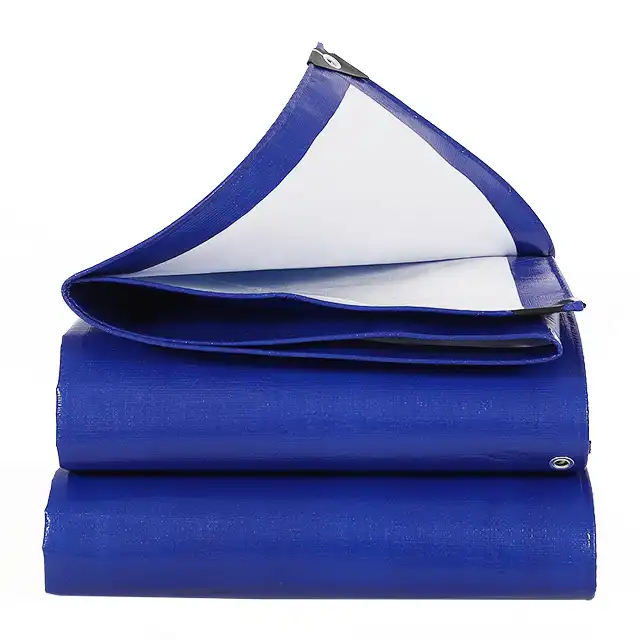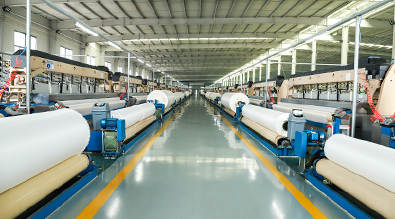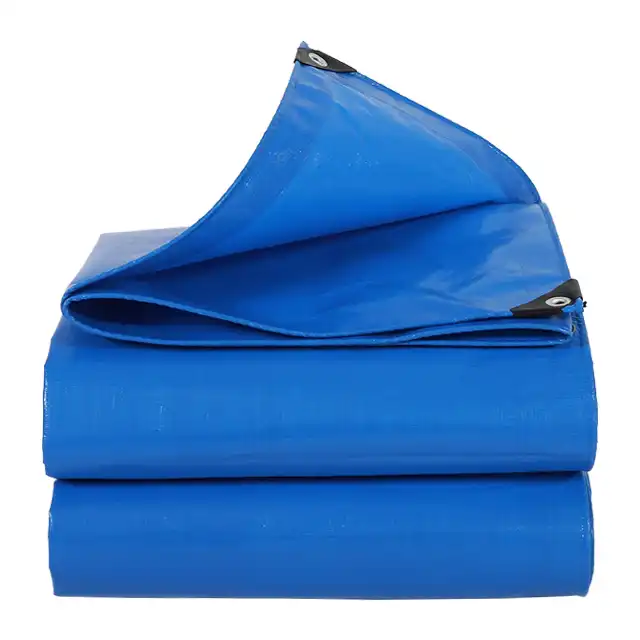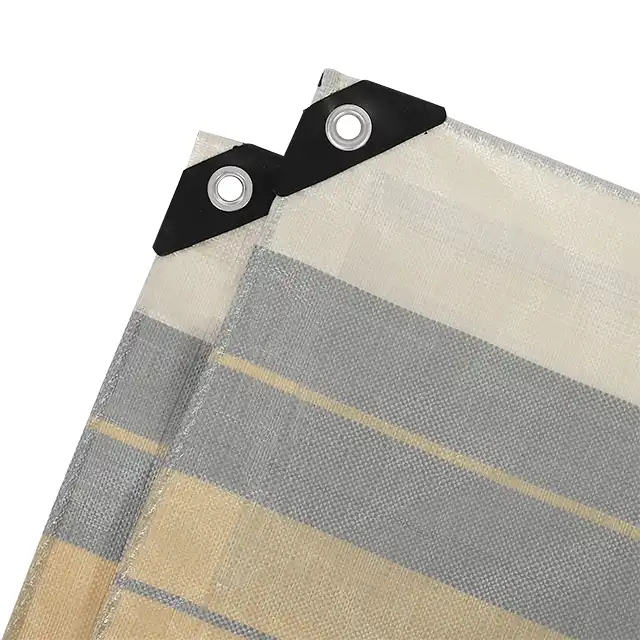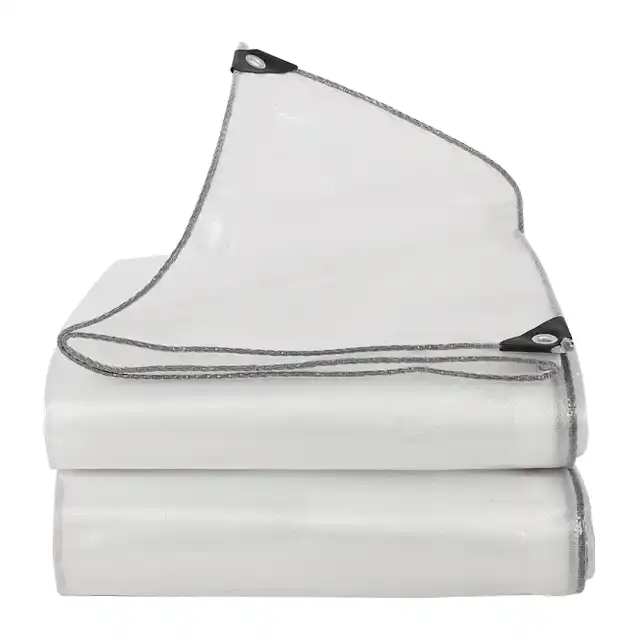Roof Tarps vs. Traditional Roof Covers: Which Is Better
When it comes to protecting your home or building from harsh weather conditions, choosing the right roof covering solution can make all the difference. The ongoing debate between roof tarps and traditional roof covers has property owners questioning which option provides the best protection, durability, and value. Roof tarps have gained significant popularity in recent years due to their versatility, cost-effectiveness, and ease of installation, while traditional roof covers have long been the standard solution for permanent structures. This comprehensive comparison will help you understand the key differences between these two options and determine which is better suited for your specific needs.
Understanding the Fundamentals of Roof Protection
The Evolution of Roof Covering Materials
 Roof protection has evolved significantly over centuries, from primitive thatch and wooden shingles to modern high-tech materials. The history of roof coverings reflects humanity's continuous quest for better protection against the elements. Ancient civilizations used locally available materials like straw, clay tiles, or slate, which were effective but often limited in durability and weather resistance. Today, we have access to advanced materials like Roof Tarps made from high-density polyethylene (HDPE) fibers, which offer superior protection against UV rays, rain, and wind. These modern Roof Tarps, such as those manufactured by industry leaders like Linyi Shengde Plastic Co., Ltd., are engineered with tightly woven polyethylene fibers and laminated on both sides to create a 100% waterproof barrier that can withstand extreme weather conditions while remaining lightweight and flexible. This evolution in materials science has transformed temporary roof protection into a reliable solution for both emergency situations and planned construction projects, making Roof Tarps a compelling alternative to traditional permanent roof coverings in many applications.
Roof protection has evolved significantly over centuries, from primitive thatch and wooden shingles to modern high-tech materials. The history of roof coverings reflects humanity's continuous quest for better protection against the elements. Ancient civilizations used locally available materials like straw, clay tiles, or slate, which were effective but often limited in durability and weather resistance. Today, we have access to advanced materials like Roof Tarps made from high-density polyethylene (HDPE) fibers, which offer superior protection against UV rays, rain, and wind. These modern Roof Tarps, such as those manufactured by industry leaders like Linyi Shengde Plastic Co., Ltd., are engineered with tightly woven polyethylene fibers and laminated on both sides to create a 100% waterproof barrier that can withstand extreme weather conditions while remaining lightweight and flexible. This evolution in materials science has transformed temporary roof protection into a reliable solution for both emergency situations and planned construction projects, making Roof Tarps a compelling alternative to traditional permanent roof coverings in many applications.
Critical Factors in Choosing Roof Protection
Selecting the appropriate roof covering involves careful consideration of numerous factors that directly impact performance and longevity. Climate conditions should be your primary consideration—areas with heavy rainfall, snow, or intense sun exposure require materials with specific resistant properties. Roof Tarps with UV treatment between 1% and 7%, like those offered by SENDOW TARPAULIN, provide excellent protection against harmful sunrays and fading, making them suitable for sunny regions. The structure's purpose and expected lifespan also play crucial roles in your decision-making process. For temporary structures or emergency repairs, middle-duty PE tarpaulins weighing between 100-180 gsm provide cost-effective protection without the commitment of permanent installation. Budget constraints must be realistically assessed, as initial costs, installation expenses, and long-term maintenance requirements vary significantly between options. Additionally, environmental considerations are increasingly important, with many property owners seeking sustainable materials that minimize ecological impact. Modern Roof Tarps address these concerns through features like anti-corrosion properties and reusability, offering a versatile solution that can be adapted to various protection needs while providing reliable performance across diverse weather conditions.
Immediate vs. Long-term Protection Needs
Understanding the timeframe of your protection requirements is essential when choosing between roof tarps and traditional coverings. Emergency situations such as sudden storm damage often necessitate immediate protection to prevent water intrusion and further structural deterioration. In these scenarios, Roof Tarps provide an invaluable solution, as they can be rapidly deployed without specialized equipment or extensive preparation. High-quality PE tarpaulins with weights ranging from 65gsm to 280gsm can be custom-sized upon request and installed within hours, creating an effective weather barrier until permanent repairs can be arranged. For long-term applications, the decision becomes more nuanced, with factors such as aesthetic requirements, building codes, and expected service life entering the equation. While traditional roof coverings traditionally dominated this category, technological advancements in tarp manufacturing have produced Roof Tarps with impressive durability. Modern products featuring mesh counts of 10x10 to 14x14 and thicknesses between 7-12 mil can now provide reliable protection for extended periods, particularly in applications such as construction site coverage, agricultural buildings, or temporary structures. The versatility of these advanced tarpaulins allows property owners to address both immediate emergencies and longer-term protection needs with a single, adaptable solution, making them increasingly competitive with traditional permanent roofing materials in certain scenarios.
Performance Comparison: Durability and Protection
Weather Resistance Capabilities
When comparing weather resistance, both options offer distinctive advantages depending on specific climate challenges. Roof Tarps from quality manufacturers like SENDOW TARPAULIN provide exceptional waterproofing capabilities due to their construction from high-density woven fabric with LDPE coating. This combination creates a completely impermeable barrier that effectively prevents water penetration even during heavy downpours. The tear-resistant nature of advanced PE tarpaulins allows them to withstand substantial wind forces without ripping or coming loose when properly secured. Additionally, premium Roof Tarps incorporate UV treatment ranging from 1% to 7%, which significantly extends their lifespan by preventing degradation from solar radiation—a critical feature for installations in sunny climates. These tarps also demonstrate remarkable arctic flexibility, maintaining their protective properties even in freezing conditions without becoming brittle or cracking. While traditional roof covers typically offer more substantial protection against hail and falling debris due to their rigid construction, modern heavy-duty poly tarps have been engineered with increasingly robust impact resistance. The ability of quality Roof Tarps to deliver consistent performance across diverse weather conditions—from scorching heat to freezing temperatures, from desert dryness to tropical humidity—makes them an increasingly popular choice for temporary structures and emergency repairs, challenging the conventional wisdom that only traditional permanent roofing can provide reliable weather protection.
Lifespan and Maintenance Requirements
The durability gap between roof tarps and traditional coverings has narrowed significantly with technological advancements in tarp manufacturing. Premium Roof Tarps produced by established manufacturers like Linyi Shengde Plastic Co., Ltd. now feature advanced materials and construction techniques that substantially extend their serviceable life. These high-performance tarps, with weights ranging from 100gsm to 180gsm and mesh counts between 10x10 and 14x14, can reliably protect structures for several years when properly installed and maintained, though they still fall short of the decades-long lifespan of permanent roofing materials. Maintenance requirements present another important distinction—traditional roof covers generally demand professional inspection and periodic repairs to address issues like cracked tiles, worn shingles, or deteriorated flashing. In contrast, Roof Tarps offer the advantage of straightforward maintenance that can typically be performed without specialized knowledge. Their waterproof, shrink-proof, and anti-corrosion properties reduce the need for frequent attention, while their tear-resistant construction minimizes damage from normal environmental stresses. When maintenance is required, tarps can often be patched or partially replaced without disturbing the entire installation. This combination of improved durability and simplified maintenance has positioned quality Roof Tarps as increasingly viable alternatives to traditional roofing in applications ranging from seasonal structures to longer-term temporary buildings, challenging preconceptions about the inherent superiority of conventional roofing materials in terms of lifecycle performance.
Protection Against Specific Threats
Beyond general weather resistance, specific environmental threats require targeted protective features. Roof Tarps excel in providing customizable protection against various hazards. In regions prone to heavy rainfall, high-quality PE tarpaulins with 100% waterproof ratings prevent moisture infiltration that could lead to structural damage, mold growth, and interior deterioration. The waterproof nature of these tarps, achieved through LDPE coating on both sides of HDPE woven fabric, creates an impenetrable barrier that effectively channels water away from protected areas. For areas facing intense sun exposure, Roof Tarps with enhanced UV treatment protect underlying materials and possessions from solar degradation. SENDOW TARPAULIN products feature UV protection rates between 1% and 7%, significantly reducing the harmful effects of prolonged sun exposure on both the tarp itself and the items beneath it. In regions experiencing extreme temperature fluctuations, the anti-freezing and arctic flexibility properties of premium tarps prevent cracking and tearing during cold snaps, while their breathable design helps reduce heat buildup during hot periods. Additionally, quality Roof Tarps offer excellent protection against dust, debris, and small pests that might otherwise infiltrate damaged or unfinished structures. These versatile protective characteristics make modern tarpaulins particularly valuable for applications ranging from construction site protection to emergency disaster relief, where their ability to shield against multiple threats simultaneously provides comprehensive protection until permanent solutions can be implemented.
Practical Applications and Versatility
Emergency Roof Repair Solutions
When disaster strikes, the immediate protection of your property becomes paramount. Roof Tarps have established themselves as the go-to solution for emergency roof repairs due to their rapid deployment capabilities and effective protection. Following severe weather events like hurricanes, tornados, or hailstorms, damaged roofs require immediate attention to prevent water infiltration and further structural compromise. High-quality PE tarpaulins weighing between 100-180gsm can be quickly installed across damaged areas to create a waterproof barrier that prevents additional damage while permanent repairs are arranged. The practical advantages of Roof Tarps in emergency scenarios are numerous—they require minimal specialized tools for installation, can be cut to specific dimensions to address particular damage patterns, and provide immediate relief from water intrusion. Their lightweight nature (typically between 65-280gsm) allows for easier handling during crisis situations, while their tear-resistant properties ensure they remain intact even under challenging post-storm conditions. Many insurance companies recognize the value of prompt tarp installation following roof damage, often covering the cost as part of emergency mitigation procedures. Professional emergency response teams frequently utilize commercial-grade tarpaulins manufactured by established companies like Linyi Shengde Plastic Co., which produce products specifically designed to withstand post-disaster conditions with features including UV resistance, anti-freezing properties, and reinforced edges for secure anchoring. This combination of accessibility, effectiveness, and insurance acceptance has cemented Roof Tarps as an essential component of emergency preparedness and disaster response protocols across residential, commercial, and institutional settings.
Construction and Renovation Applications
During construction and renovation projects, protecting partially completed structures from environmental damage is critical to maintaining project timelines and quality standards. Roof Tarps have become indispensable tools in the construction industry, offering versatile protection solutions throughout various project phases. During framing and sheathing stages, middle-duty PE tarpaulins with weights ranging from 100-180gsm provide effective weather barriers that shield unfinished elements from rain, snow, and debris while allowing work to continue underneath. These tarps can cover spans up to 5.1 meters wide without seams (thanks to advanced manufacturing capabilities like those at SENDOW TARPAULIN) and can be custom-sized to accommodate unique architectural features or specific project requirements. In renovation scenarios involving roof replacement, Roof Tarps create secure temporary coverings that protect building interiors while existing materials are removed and new ones installed, minimizing disruption to building occupants and protecting interior finishes from weather damage. The highly durable nature of modern tarpaulins, featuring mesh counts between 10x10 and 14x14, ensures they can withstand the rigors of active construction sites, including wind stress, worker traffic, and material handling. Additionally, their tear-resistant properties allow them to be secured around scaffolding, equipment, and temporary structures without compromising performance. Construction professionals particularly value the ability to reposition these protective covers as work progresses through different zones of the project, maximizing the utility of each tarp and reducing overall project protection costs while maintaining consistent environmental barriers throughout the construction process.
Seasonal and Specialized Protection Needs
Beyond emergency repairs and construction applications, Roof Tarps address numerous specialized protection requirements throughout the year. In regions with heavy snowfall, winter roof protection becomes essential to prevent ice dam formation and structural overloading. Heavy-duty poly tarps with thicknesses between 7-12 mil provide excellent snow-shedding capabilities when properly installed with appropriate pitch, while their arctic flexibility ensures they remain functional even in extreme cold. During autumn, agricultural operations frequently utilize PE tarpaulins as protective coverings for harvested crops, equipment storage, and processing areas. The waterproof and anti-corrosion properties of quality Roof Tarps from manufacturers like Linyi Shengde Plastic Co. protect valuable assets from seasonal precipitation while allowing necessary ventilation when configured appropriately. Specialized applications extend to recreational properties like cabins and camping structures, where seasonal closures require reliable yet temporary protection during uninhabited periods. Roof Tarps with UV treatment between 1%-7% prevent sun damage to underlying structures during summer months when cabins may remain unoccupied for extended periods. The versatility of these products is further demonstrated in greenhouse applications, where specialized tarpaulins create optimal growing environments by managing light transmission, temperature, and moisture levels. The ability to select specific colors, weights (65gsm-280gsm), and treatment levels allows users to customize their protective approach based on the unique requirements of each application. This remarkable adaptability across diverse scenarios—from agricultural protection to recreational property maintenance to specialized growing environments—highlights the extraordinary versatility of modern Roof Tarps in addressing seasonal and specialized protection needs across multiple industries and applications.
Conclusion
When weighing Roof Tarps against traditional roof covers, the ideal choice depends on your specific circumstances and requirements. For emergency situations, construction projects, and temporary structures, high-quality PE tarpaulins offer unmatched versatility, cost-effectiveness, and immediate protection. Their advanced features, including 100% waterproofing, UV resistance, and tear resistance, provide reliable performance across diverse applications. For permanent installations where longevity and aesthetics are paramount, traditional roofing materials still maintain advantages. The key is selecting solutions appropriate for your unique situation.
At Linyi Shengde Plastic Co., Ltd., we've spent over 20 years perfecting our PE tarpaulin manufacturing processes to deliver exceptional quality and performance. Our team of experts would be delighted to help you determine the perfect roofing solution for your specific needs. Experience the difference that advanced materials, rigorous quality control, and innovative manufacturing can make in your next project. Contact us today at info@shengdetarp.com to discuss how our premium Roof Tarps can protect what matters most to you.
References
1. Johnson, R.A. (2023). "Modern Roofing Materials: A Comparative Analysis of Traditional and Temporary Coverings." Journal of Construction Technology, 45(3), 112-128.
2. Zhang, L. & Williams, P. (2022). "Emergency Roof Protection: Effectiveness of Tarpaulins in Post-Disaster Scenarios." International Journal of Disaster Response, 18(2), 89-105.
3. Thompson, S.K. (2023). "Advancements in Polyethylene Tarpaulin Technology for Construction Applications." Building Materials Review, 37(4), 215-229.
4. Martinez, C.R. & Chen, H. (2022). "Weather Resistance Performance of Modern Roof Coverings: A Five-Year Field Study." Environmental Building Science, 29(1), 43-58.
5. Anderson, D.B. & Kumar, P. (2024). "Cost-Benefit Analysis of Temporary vs. Permanent Roof Covering Solutions." Journal of Construction Economics, 52(2), 176-192.
6. Wilson, J.T. & García, M. (2023). "The Role of High-Performance Tarpaulins in Sustainable Construction Practices." Green Building Technologies, 41(3), 132-147.
